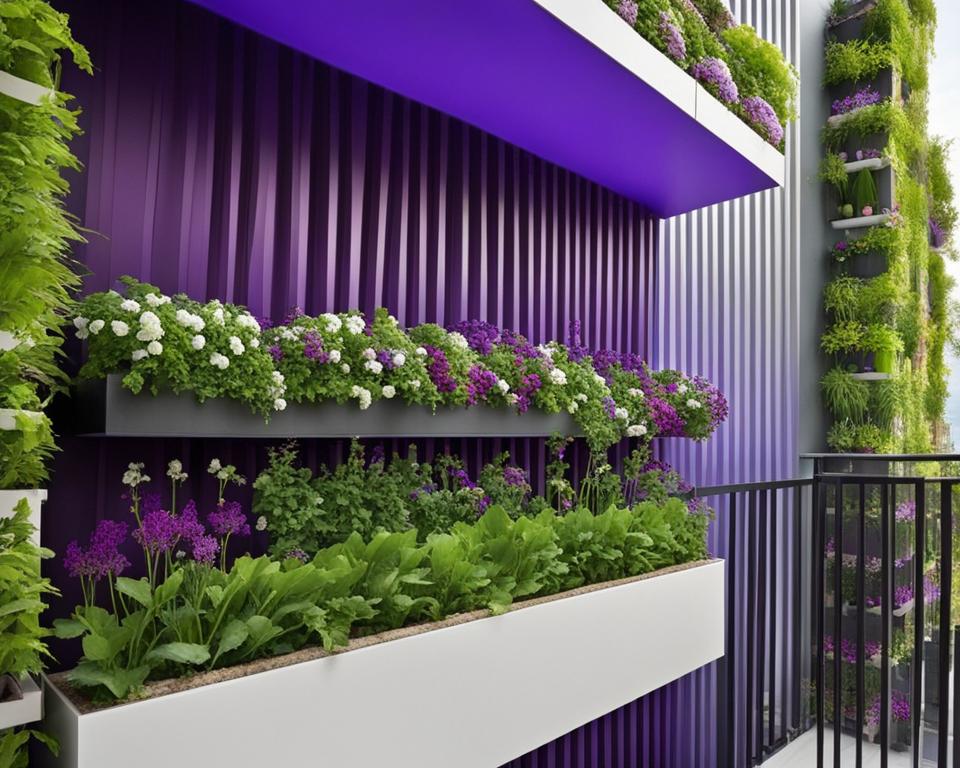Gardening is a rewarding activity that allows me to connect with nature and produce fresh, nutritious produce. Recently, I have discovered the exciting world of peas vertical gardening, which allows me to save space and enhance the beauty of my home garden all at once. Vertical gardening ideas for peas are innovative and practical, helping me to maximize space utilization and increase my yield.
If you’re looking for ways to grow fresh peas in a limited space, then vertical gardening may be the perfect solution for you. In this section, we will explore peas vertical gardening ideas, the benefits of vertical gardening for peas, and tips for maximizing space with vertical pea planters.
Key Takeaways
- Peas vertical gardening is an innovative and practical way to save space and enhance the beauty of your home garden.
- Vertical gardening allows you to grow fresh peas in a limited space while maximizing yield.
- Vertical gardening offers a range of benefits for pea plants, including improved air and light circulation, pest control, and disease prevention.
- You can maximize space utilization by using vertical pea planters and trellising techniques.
- Vertical gardening for peas requires specific care and attention, including selecting the best varieties, trellising, and companion planting.
Why Grow Peas Vertically?
When it comes to gardening, space is a common concern for many enthusiasts. As gardens tend to expand, vertical gardening is becoming increasingly popular due to its ability to maximize space. Vertical gardening entails growing plants upwards, either along a trellis or a wall, rather than outwards along the ground. Peas are an excellent vegetable to grow vertically, and in this section, we explore the benefits of vertical gardening for peas.
1. Save space
Vertical gardening allows you to grow more plants in less space, making it ideal for small gardens, balconies, or rooftops. By growing upwards, you can utilize the vertical space in your garden while still allowing enough room for other plants or outdoor furniture. This method can help you achieve a higher yield of peas in a smaller area.
2. Increase air circulation
Pea plants require sufficient air circulation to prevent diseases and fungal growth. Vertical gardening helps to increase air circulation around the plant by exposing more of its surface area to sunlight and air, which can aid in keeping the plant healthy.
3. Easy access
Growing peas vertically provides easy access to the plants for harvesting or pruning. Since the plants are raised off the ground, you can easily reach the fruit without bending down, which can reduce the strain on your back and knees. This feature makes vertical gardening an ideal option for gardeners with physical limitations.
4. Aesthetically pleasing
Vertical gardening allows you to create unique, attractive displays that can be used to enhance the overall beauty of your garden. Pea plants growing up trellises or walls can create a striking focal point or vertical accent in your garden.
In conclusion, vertical gardening provides several benefits for peas, including space-saving, improved air circulation, easy access, and an aesthetically pleasing design. By utilizing these benefits, you can grow a thriving vertical pea garden that is both functional and visually appealing.
Selecting the Best Pea Varieties for Vertical Gardens
When it comes to vertical gardening, not all pea varieties are created equal. Some varieties may be too tall and lanky, while others may not have the strength to support vertical growth. Therefore, it’s essential to choose the right pea variety for your vertical garden to ensure successful growth and bountiful harvests.
Here are some of the best pea varieties for vertical gardens:
| Variety | Description |
|---|---|
| Little Marvel | An early-maturing variety with sweet and tender peas. Little Marvels grow to about 2-3 feet tall, making them ideal for trellising. |
| Tom Thumb | A dwarf variety that only grows to about 9-12 inches tall. Tom Thumb peas are perfect for small-space gardening and can be trellised or grown in containers. |
| Sugar Snap | A popular variety that is well-suited for vertical gardening. Sugar Snap peas grow up to 5-6 feet tall and produce sweet and crunchy pods that are perfect for snacking. |
| Alderman | An heirloom variety that grows tall and produces a bountiful harvest. Alderman peas can grow up to 8 feet tall and are perfect for creating a living pea wall. |
When selecting a pea variety for your vertical garden, consider the overall height of the plant, the strength of the stem, and the size and quality of the peas produced. It’s also essential to choose a variety that is well-suited for your climate and growing conditions.
Now that you know which pea varieties are best for vertical gardening, it’s time to start planting and trellising. In the next section, we will explore different trellising techniques and tips for optimal pea growth.
How to Trellis Peas: Techniques and Tips
One of the most crucial aspects of vertical gardening for peas is trellising. By supporting pea plants as they grow upward, you can maximize space while ensuring healthy growth and bountiful harvests. In this section, I will share different trellising techniques and provide valuable tips on how to create sturdy and effective pea trellises.
Pea Trellis Ideas
When it comes to trellising peas, there are several creative and effective ideas that you can utilize for your vertical garden. Here are some popular pea trellis ideas:
- String trellis: This is a simple and affordable trellis option. Attach two sturdy posts to either end of your garden bed and string sturdy twine or wire between them. Tie the pea plants to the string as they grow upward.
- Mesh trellis: A mesh trellis is easy to set up and provides excellent support for your pea plants. Install a mesh panel behind your garden bed and use twist ties to secure the pea plants to the mesh as they grow.
- Trellis netting: This is a versatile and adjustable trellis option. Install a trellis netting panel behind your garden bed and secure it in place with stakes. As your pea plants grow, weave them through the netting for support.
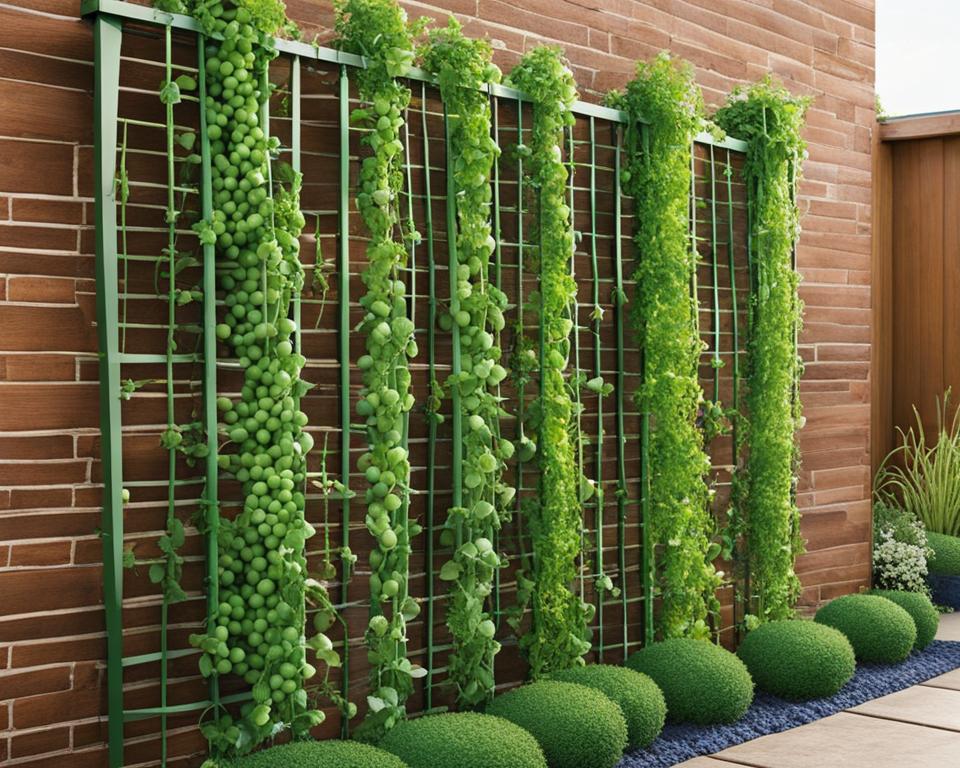
Vertical Gardening Techniques for Peas
When trellising peas, it’s important to utilize vertical gardening techniques that will promote healthy growth and productive harvests. Here are some valuable tips to keep in mind:
“Ensure that the trellis is sturdy enough to support the weight of your pea plants as they grow. A flimsy trellis may collapse under the weight of heavy pea pods, leading to damage or loss of your harvest.”
- Train your pea plants early: As soon as your pea plants begin to grow, guide them towards the trellis support. Using twist ties or string, gently secure the plants to the trellis to keep them growing vertically.
- Prune your pea plants: Pruning your pea plants can help to promote healthier growth and higher yields. Pinch off the top growth of the plants when they reach the top of the trellis to encourage lateral branching.
- Provide adequate support: Ensure that the trellis is sturdy enough to support the weight of your pea plants as they grow. A flimsy trellis may collapse under the weight of heavy pea pods, leading to damage or loss of your harvest.
Conclusion
By incorporating trellising into your vertical pea garden, you can ensure healthy and productive growth while maximizing space utilization. Use the above tips and ideas to create a sturdy and effective pea trellis that will support your plants as they grow upward. Stay tuned for the next section to learn about vertical planters and how they can help you maximize space for pea growth.
Vertical Planters: Maximizing Space for Pea Growth
Vertical planters are an excellent solution for saving space while growing peas. There are several types of vertical planters to choose from, including:
- Wall-mounted planters
- Trellis planters
- Stacked planter boxes
Whichever type of planter you choose, it’s essential to ensure that it provides adequate support for your pea plants to grow upwards.
When creating your own vertical pea planter, be sure to use sturdy materials and secure all pieces tightly. Consider using recycled materials such as pallets or PVC pipes to make your planter both environmentally friendly and affordable.
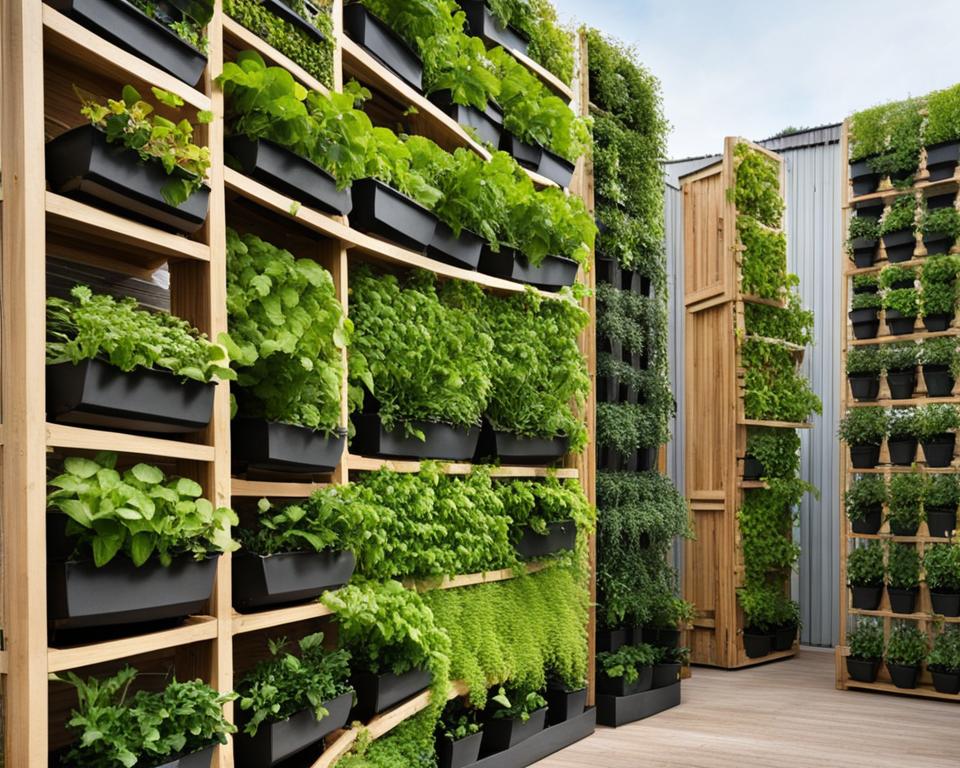
Trellis Planters
Trellis planters are an excellent option for vertical pea gardening as they offer both support and a structure for the peas to climb. To create a trellis planter, you will need:
| Materials | Tools |
|---|---|
| Wooden trellis | Drill |
| Large planter box | Screws |
| Pea seeds | Saw |
Begin by assembling the trellis and securing it to the back of the planter box using screws and a drill. Fill the planter box with soil and plant your pea seeds at the base of the trellis. As the peas grow, train them to climb the trellis using garden twine or clips.
Stacked Planter Boxes
Stacked planter boxes are another popular option for vertical pea gardening as they allow for ample soil space for root growth and they can be easily customized to fit your space. To create a stacked planter box, you will need:
| Materials | Tools |
|---|---|
| Planter boxes | Drill |
| Pea seeds | Screws |
| Soil | Saw |
Begin by drilling drainage holes in the bottom of each planter box. Stack the boxes on top of each other, securing them together with screws and a drill. Fill each box with soil and plant your pea seeds in the bottom box. As the peas grow, they will climb up the stacked boxes.
Vertical planters not only provide an efficient use of space, but they can also add visual interest to your home garden. With a bit of creativity and innovation, you can create a stunning vertical pea garden that will yield a bountiful harvest of fresh and delicious peas.
Essential Tips for Growing Peas Vertically
Growing peas vertically requires specific care and attention to ensure a healthy and bountiful harvest. To help you along the way, I’ve compiled a list of essential tips for successful vertical pea gardening:
- Choose the right spot: Peas require at least six hours of sunlight each day, so choose a spot that receives adequate sunlight. Also, ensure the soil is well-drained and fertile, with a pH of 6.0-7.5.
- Planting: Plant your pea seeds about 1 inch deep and 2-4 inches apart, depending on the variety. Ensure the soil is evenly moist, but not waterlogged.
- Trellis: As discussed in section 4, trellising is crucial for vertical pea gardening. Use a sturdy trellis system to support your pea plants and prevent them from collapsing.
- Watering: Peas require consistent moisture throughout their growing period, especially during flowering and pod formation. Water your plants evenly, but avoid overwatering to prevent root rot.
- Fertilizing: Peas are heavy feeders and require regular fertilization. Use a balanced fertilizer, such as 10-10-10, or add compost to the soil before planting.
- Pest control: Peas are susceptible to pests, such as aphids, slugs, and snails. Use organic pest control methods, such as companion planting (discussed in section 7) or handpicking the pests.
- Harvesting: Peas are ready to harvest when they are plump and bright green in color, usually around 60-70 days after planting. Pick the pods regularly to encourage continuous pea production.
By following these essential tips, you can ensure a healthy and thriving vertical pea garden. Remember, vertical gardening requires attention to detail, but the results are well worth the effort.
Companion Planting with Peas in Vertical Gardens
Companion planting is an excellent way to improve the health and yield of your pea plants in vertical gardens. Certain plants can work together to provide mutual benefits, such as repelling pests and attracting pollinators. Here are some ideal companion plants that go well with peas in vertical gardens:
| Companion Plants for Peas in Vertical Gardens | Benefits |
|---|---|
| Lettuce | Provides shade for the roots of the pea plants and attracts pollinators. |
| Radishes | Act as a natural pest deterrent and help break up soil for better water absorption. |
| Carrots | Help to aerate the soil and improve drainage. |
| Beans | Fix nitrogen in the soil, which benefits both beans and peas. |
| Marigolds | Repel pests and attract beneficial insects, such as ladybugs and lacewings. |
Keep in mind that not all plants make good companions, so it’s important to research your options before planting. Avoid planting onions and garlic near peas, as they can stunt their growth. Also, make sure to space companion plants appropriately to avoid overcrowding.
How to Plant Companion Plants with Peas in Vertical Gardens
When planting companion plants with peas in vertical gardens, there are a few things to keep in mind:
- Choose plants that have similar water and sunlight requirements.
- Plant companion plants around the perimeter of your vertical planter or along the base of your trellis.
- Alternate rows of companion plants and peas to maximize space and provide adequate airflow.
- Water companion plants and peas separately, as they may have different watering needs.
With the right companion plants, your vertical pea garden can thrive and produce a bountiful harvest. Plus, it can create a beautiful and diverse garden ecosystem that will enhance the overall aesthetic of your home garden.
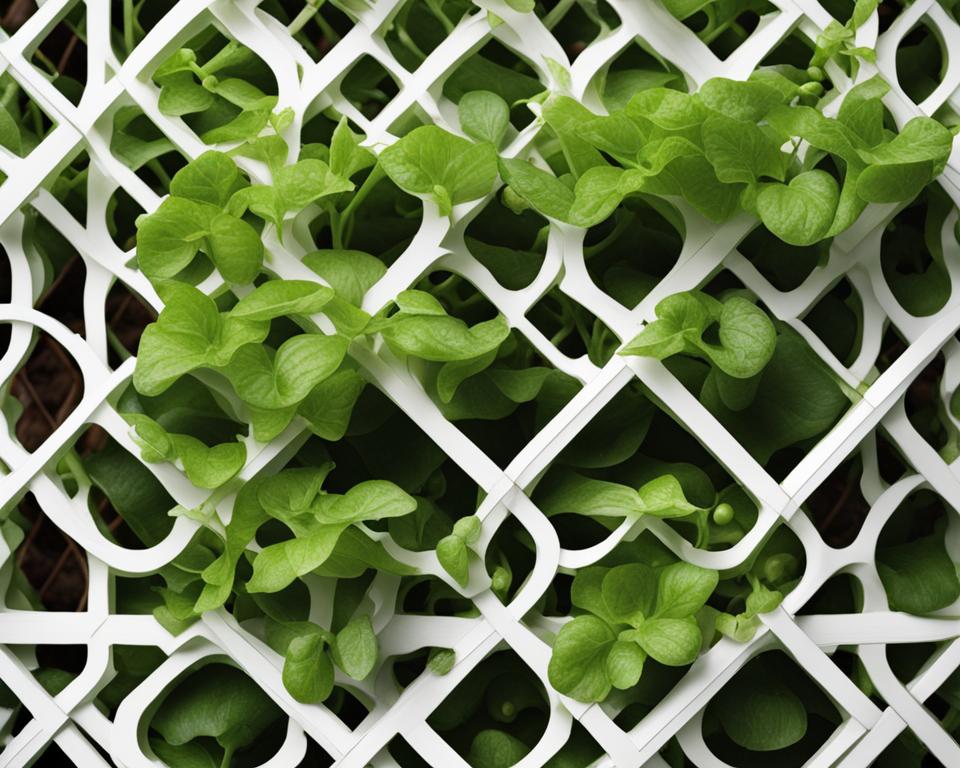
Harvesting and Caring for Peas in Vertical Gardens
After a successful growth of pea plants in a vertical garden, the next step is to harvest and take care of the peas. Harvesting is an exciting time for any gardener, and it’s important to know the right techniques to ensure optimum flavor and longevity. Here are some essential tips to guide you:
Harvesting Peas
Peas are ready to be harvested when they are plump and sweet. The best time to harvest is in the morning when the peas are the crispiest. You can use your fingers or scissors to cut the pea pods off the plants. Be gentle to avoid damaging the plant or breaking the pea pods. Also, remember to harvest regularly to prevent the peas from becoming overripe or starchy.
Caring for Peas
After harvesting, it’s important to take good care of the pea plants to ensure a prolonged growth cycle and a bountiful harvest. Here are some crucial tips:
- Water: Water the plants regularly, particularly during dry spells.
- Fertilizers: Use organic fertilizers to provide necessary nutrients to the plants.
- Pruning: Prune the plants regularly to promote growth and prevent disease.
- Pest Control: Check the plants frequently for insect infestations, and take necessary measures to control them.
Storing Peas
After harvesting, store the peas in an airtight container in the refrigerator. They should stay fresh for up to five days. Alternatively, you can blanch the peas and freeze them to prolong their shelf life.
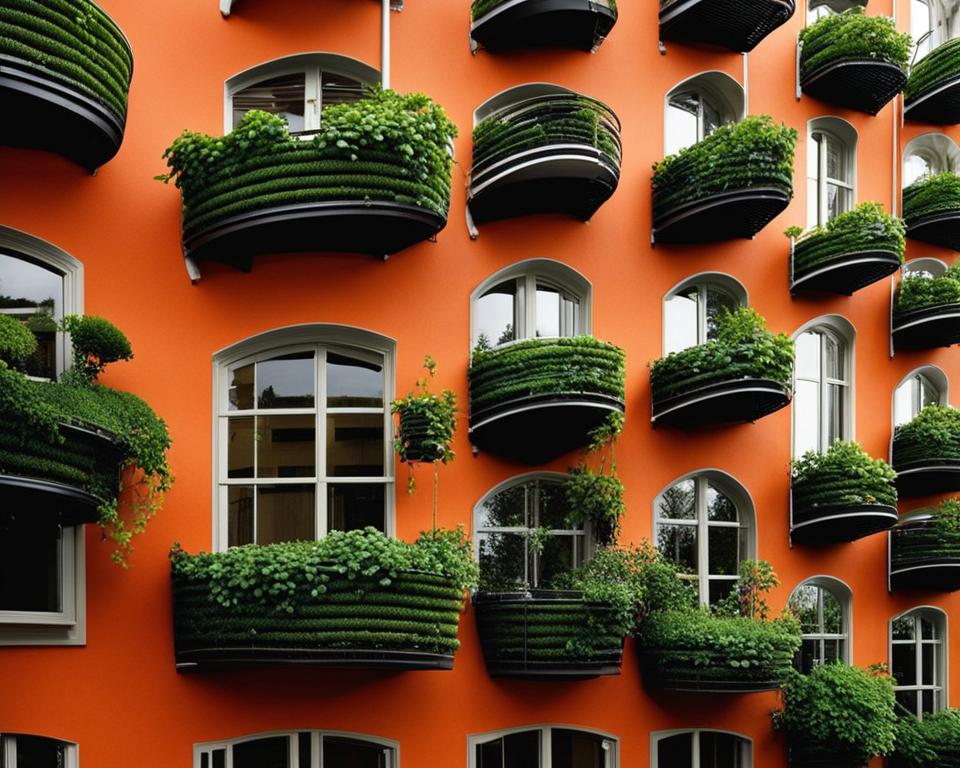
With proper care and attention, you can enjoy fresh and delicious peas from your vertical garden. Keep these tips in mind and enjoy the fruits of your labor!
Troubleshooting Common Issues in Vertical Pea Gardening
Peas vertical gardening can be a fun and rewarding experience, but it’s not always without its challenges. Here are some common issues that may arise during the process and how to address them.
Pest Infestations
One of the most frustrating issues in any garden is pest infestations. Aphids, spider mites, and thrips are just a few of the pests that can plague your vertical pea garden. Symptoms of infestation include yellowing or wilting leaves, stunted growth, and visible insects on the plants.
To combat pests, try spraying your plants with a solution of water and dish soap or neem oil. You can also introduce beneficial insects such as ladybugs or lacewings to control the pest population.
Nutrient Deficiencies
Another issue that may arise in a vertical pea garden is nutrient deficiencies. Symptoms of deficiencies can include yellowing leaves, stunted growth, and poor crop production.
To address nutrient deficiencies, ensure that your plants are receiving the proper amount of water and sunlight. You may also consider adding a balanced fertilizer to the soil or using compost as a natural source of nutrients.
Overcrowding
Overcrowding is a common problem in vertical gardening, especially when trying to maximize space. Unfortunately, too many plants in a confined area can cause a range of issues such as stunted growth and poor air circulation, leading to disease and pest problems.
To avoid overcrowding, be sure to follow proper spacing guidelines for your specific pea variety. You may also consider using trellising techniques to help support your plants as they grow vertically.
Watering Issues
Finally, watering issues can also arise in a vertical pea garden. Overwatering can cause root rot and other plant diseases, while underwatering can cause stunted growth and poor crop production.
To ensure proper watering, check the soil moisture regularly and water only when the top inch of soil feels dry to the touch. Consider using a drip irrigation system or watering from the bottom to help prevent overwatering and ensure your plants receive adequate moisture.
By addressing these common issues, you can maintain a healthy and thriving vertical pea garden. With a little care and attention, you’ll be enjoying fresh, homegrown peas in no time.
Conclusion
In conclusion, I hope this article has inspired you to try out peas vertical gardening in your own home garden. By implementing the innovative ideas and techniques we’ve discussed, you can maximize your space utilization and grow fresh, delicious peas in a compact environment.
Remember, selecting the best pea varieties for vertical gardens, understanding how to trellis your peas, and utilizing vertical planters are all critical components of successful vertical pea gardening. Additionally, incorporating companion plants and providing proper care to your pea plants are key to ensuring a thriving garden ecosystem.
In the event that issues arise, be sure to troubleshoot common problems such as pest infestations and nutrient deficiencies. With the right knowledge and care, you can enjoy a bountiful harvest of tasty peas from your vertical garden.
Thank you for joining me on this journey into the exciting world of peas vertical gardening. Let us know in the comments below how your vertical pea garden is coming along – we’d love to hear from you!
FAQ
Why should I grow peas vertically?
Growing peas vertically offers several benefits. It maximizes space in your garden, allows for better air circulation around the plants, reduces the risk of diseases, and makes harvesting easier.
What are the best pea varieties for vertical gardens?
Not all pea varieties are suitable for vertical growth. Some excellent options for vertical gardens include sugar snap peas, snow peas, and dwarf pea varieties. These varieties have compact growth habits and can thrive in vertical gardening setups.
How do I trellis peas?
To trellis peas, you can use various techniques such as using stakes, cages, or a trellis netting. It’s important to provide sturdy support for the pea plants to climb and ensure proper spacing between the plants for optimal growth.
What are some vertical planter options for growing peas?
Vertical planters offer a space-saving solution for growing peas. Some popular options include vertical planters with pockets, hanging baskets, and stacked planter boxes. You can also create your own vertical pea planter using recycled materials or a DIY project.
What are some essential tips for growing peas vertically?
When growing peas vertically, it’s crucial to provide consistent watering, regularly monitor for pests and diseases, and ensure proper fertilization. Additionally, you should regularly train the pea vines to climb the trellis and provide support as they grow.
Can I companion plant with peas in vertical gardens?
Yes, companion planting with peas in vertical gardens can benefit both the peas and the companion plants. Some suitable companion plants for peas include carrots, lettuce, radishes, and beans. These plants can help deter pests, provide shade, and improve soil health.
How do I harvest and care for peas in vertical gardens?
It’s important to harvest peas regularly when they are young and tender. To care for peas in vertical gardens, ensure they receive adequate sunlight, water them consistently, and provide support for the pea plants as they grow.
What are common issues in vertical pea gardening and how can I troubleshoot them?
Common issues in vertical pea gardening include pest infestations, nutrient deficiencies, and fungal diseases. To troubleshoot these problems, you can use organic pest control methods, provide appropriate fertilization, and ensure proper air circulation around the plants.

